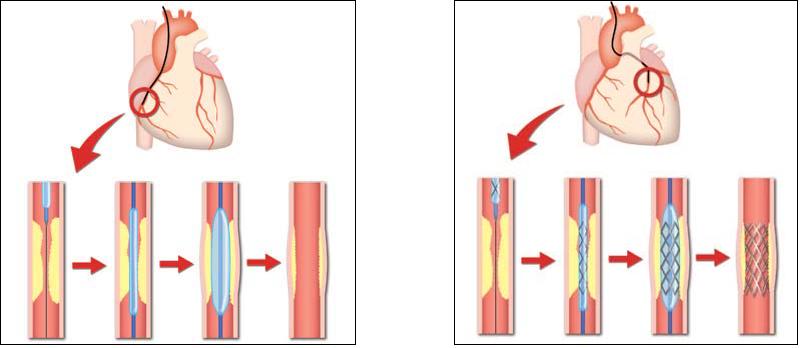What is it
A coronary angiography is the procedure during which a flexible tube (catheter) is inserted through an artery in the groin or the arm and threaded up with an X-Ray to the beginning of both coronaries (the arteries that supply with blood the heart). Contrast media is then injected to visualize any possible stenosis (narrowing of the artery) caused by accumulation of fat in the artery wall. Once visualized, the stenosis can be treated with angioplasty. This requires crossing the stenosis with a small balloon, which is then inflated, pushing out the blockage, restoring patency and blood supply to the heart (Fig. 8). A stent (a wire mesh tube), is almost always placed at the level of the stenosis in order to prevent re-blockage (Fig. 9). When a coronary angioplasty and stenting is performed as an emergency treatment for an acute heart ischemia or myocardial infarction (failure in blood supply due to partial or complete occlusion of one of the arteries), it is called a primary angioplasty. Patients are usually discharged 2 days after the operation.



